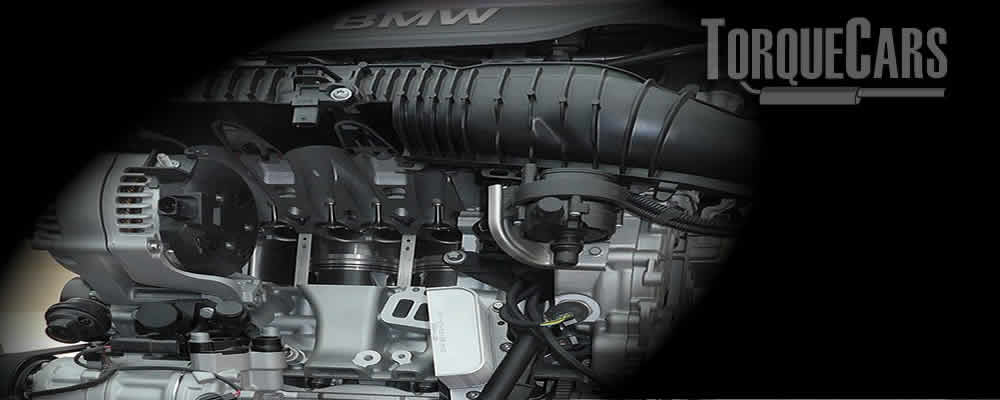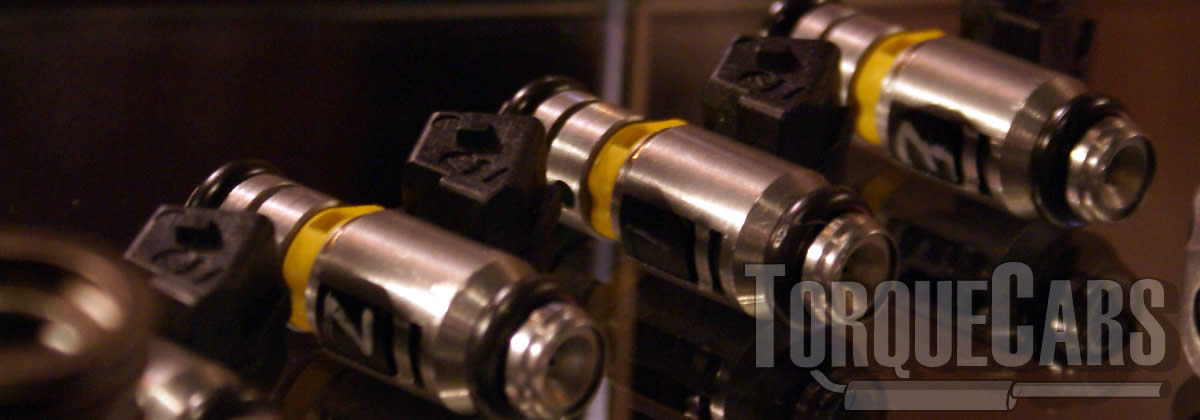Tuning the BMW B48
"Building the best modified BMW B48 engine!"
Carref prides itself on providing the latest tips and guides to your modification project.
The BMW B48 make awesome project engines and with the optimum uprated parts like remaps, turbo upgrades and camshafts you will greatly enhance your driving enjoyment.
The B48 engine has much in common to the N20 on which it was based on and also came with double VANOS Valvetronic and a twin scroll turbo.
Here we review B48 tuning and report on the ultimate modifications.
We rely on our visitors to pass on tips and tell us about their projects and what worked on their car, and this article is the culmination of the feedback we have received. First let us look at the history and specs of this engine and then consider which tuning modifications work best on it.
History of the Engine
The B48 shares much with the N20 which it was based on and also came with double VANOS Valvetronic and a twin scroll turbo.
- 181 hp @5,000–6,500 rpm 290Nm 214 lbft @1,350–4,250 rpm
2016– - 189 hp @4,700–6,000 rpm 280Nm 207 lbft @1,250–4,500 rpm
2014– - 221 hp @5,000–6,500 rpm 310Nm 229 lbft @1,400–5,000 rpm
2016– - 228 hp @5,000–6,500 rpm 300Nm 221 lbft @1,250–4,800 rpm
2015– - 248 hp @5,200–6,500 rpm 350Nm 258 lbft @1,450–4,800 rpm
255 hp @5,000–6,500 rpm 400Nm 295 lbft @1,550–4,400 rpm
2016– - 302 hp @5,000–6,250 rpm 450Nm 332 lbft @1,750–4,500 rpm
2019–
Tuning the BMW B48 and best B48 performance parts.

What are the most effective B48 tuning mods
Just because particular tuning mods are are common on B48 it doesn't mean it is good, we shall optimum tuning mods that will give your B48 the best power gain for you spend.
Significant gains on the B48 can be made from cam upgrades. Altering the cam profile alters the intake and exhaust durations on the engine and can dramatically change the torque and power output.

Fast road camshafts commonly increase the bhp and torque through the rpm band, you may lose a little bottom end bhp but the high end rpm power will be higher.
Race camshafts, increase the high end rpm power band but as a result the car will not idle smoothly and low end power nearly always suffers.
A Competition camshaft won't do well if driving around busy urban areas.
You should ideally match your bhp range to your cars usage so for a car driven daily stick with a shorter duration B48 camshaft

Different B48 engines respond better to extreme cam durations check your engine on a rolling road.
The ecu map and fuel pump and injectors also will say much on the torque gains you'll make.
Extending exhaust or intake durations can alter the torque band and on most engines the exhaust and intake durations do not need to match, although most cams and tuners use matched pairs there are some advantages to extending the intake or exhaust durations.
Please watch our introduction Video tutorial to car tuning. Be sure to subscribe and support our new channel.
How to tune your car
- Improve the handling
Focus on Suspension improvements, such as coilovers and make sure the bushings are in good order and that the alignment is correct. Then focus on improving the brakes, with a big disk brake conversion kit and fast road brake pads.
- Remove restrictions
Focus on the intake and exhaust with filters being the common point of restriction in a tuned car. Intercoolers may also become restrictive on turbo engines so this may also need to be uprated.
- Burn more fuel & air
Increase the fuelling so it matches the air coming into the engine. The ratio is important so you need to improve the fuel pump and injectors, so the head mods, big valve conversions, fast road camshafts and forced induction upgrades extra supply of air is adequately met.
- Test and replace any weak parts
Weak areas are commonly the clutch, the turbocharger and pistons and crankshaft in a highly tuned engine. Makes sure these components will cope with your power aspirations.
- The Tune or Remap
A cars ECU controls the fuel, timing, spark and even the turbo in some cases, so to fully extract your gains you should remap the car last and this will fully release the power. Some cars are easy to map, and others require piggyback ECU's or aftermarket ECU's but this is the most vital step of your tuning project.
Modifying to Stage 1:
Remaps/piggy back ECU, Panel air filters, Intake headers, Sports exhaust manifold, Drilled & smoothed airbox, Fast road camshaft.
Modifying to Stage 2:
induction kit, Sports catalyst & performance exhaust, fuel pump upgrades, Fast road cam, high flow fuel injectors, Ported and polished head.
Modifying to Stage 3:
Engine balancing & blueprinting, Internal engine upgrades (head flowing porting/bigger valves), Competition cam, Twin charging conversions, Adding or Upgrading forced induction (turbo/supercharger), Crank and Piston upgrades to alter compression.
A remap allows a tuner to unlock the full potential of all the upgrades you've done to your B48.
It will usually give around 30% more power on turbocharged vehicles and you can expect to see around 15% on NASP engines, but the end result usually depend much on the upgrades you've carried out and the condition of your engine.
Pushing fuel and air into each cylinder is vital to any performance tuning job.
Air Intake manifolds flow the air during the suck phase from the filter and allow it to be drawn into the engine cylinders.
Shape and flow characteristics of the Plenum can make a noticeable improvement to fuel atomisation and engine efficiency on the B48.
Most intake headers are improved through motorsport parts, although a few makers provide reasonably good intake headers.
Increasing the B48 valve size, carrying out B48 port enlargement and head flowing will also raise bhp and torque, and more importantly will raise potential for increasing the bhp and torque increase on other parts.
Which turbo upgrades are best?

NASP engines need quite a lot of work when you add a turbo, so we have a separate guide to help you take into account the pros and cons of going this route on your B48
The more air you can get into an engine, the more fuel it can burn and uprating the induction with a turbocharger upgrade makes major power gains.
If your motor is fitted with a turbo parts are going to net you a larger power gain and you will discover turbocharged engines are made using uprated components.
There are common areas of failure for every engine, with some being extremely strong and some only able to handle stock power
Discover these restrictions and install better pistons and crank to handle the power.
We see many tuners spending a lot of money on turbo upgrades on the B48 only to have the engine go up in smoke soon after it's completed.
Larger upgraded turbochargers tend to experience low end lag, and little turbochargers spool up really quickly but don't have the peak end engines power gains.
In recent times the choice of turbo units is always moving on and we commonly find variable vane turbo units, where the vane angle is altered according to speed to lower lag and increase top end torque.
Twin scroll turbo units divert the exhaust gases into 2 channels and direct these at differently profiled vanes in the turbo. They also improve the scavenging effect of the engine.
You'll commonly see there is a limitation in the air flow sensor AFM/MAF on these engines when a lot more air is being sucked into the engine.
We see 4 bar air sensors coping with quite large power gains, whereas the OEM air sensor was restricting bhp at a much lower level.
Adding a supercharger or additional turbo will make large power gains, although more complex to configure. We have this feature on twinchargers if you want to read more.
Fuelling
Don't omit to look at the fuel system when you are increasing the bhp and torque - it makes the car more thirsty.  It is important to over specify your flow rate on the injectors.
It is important to over specify your flow rate on the injectors.
The rule of thumb is to add 20% when fitting an injector, this takes into account injector deterioration and allows a little spare capacity should the engine require more fuel.
We think this one is common sense, but you'll need to match your fuel injector to the type of fuel your car uses as well.
All the following flywheel power targets will assume an injector duty cycle of 80% and a base of 58psi of fuel pressure at idle.
4 Cylinder turbocharged engines
- 58 PSI 340cc/min 200hp
- 58 PSI 511cc/min 300hp
- 58 PSI 682cc/min 400hp
- 58 PSI 1022cc/min 600hp
4 Cylinder NASP engines
- 58 PSI 285cc/min 200hp
- 58 PSI 426cc/min 300hp
- 58 PSI 568cc/min 400hp
- 58 PSI 853cc/min 600hp
4 Cylinder supercharged engines
- 58 PSI 312cc/min 200hp
- 58 PSI 468cc/min 300hp
- 58 PSI 625cc/min 400hp
- 58 PSI 937cc/min 600hp
Choosing the right performance exhaust
One of the most common mistakes and problems we see in tuning projects is usually down to the exhaust, or rather a poorly chosen exhaust for your engine.
You should look to upgrade your exhaust if the current exhaust is creating a restriction.
On most factory exhausts you'll find the exhaust flow rate is good even on modest power gains, but when you start pushing up the power levels you will need to get a better flowing exhaust.
Sports exhausts can usually air flow out of the engine but avoid an exhaust that is too big or you may end up will reduce the flow rate. Stick to 1.5 to 2.5 inches for best results.
Typically exhaust restrictions can be traced to the catalysts installed, so adding a higher flowing performance alternative will help avoid this restriction.
Weak spots Issues & problem areas on the B48
The B48 engines are generally reliable and solid as long as they are regularly serviced and maintained.
Regular oil changes are vital on the B48, especially when tuned and will help extend the life and reliability of the engine.
For more information on Tuning your B48 engine please join us in our friendly forum where you can discuss tuning options in more detail with our tuning articles to get a full grasp of the benefits and drawbacks of each modification.
Please help us improve these tips by sending us your feedback in the comments box below.
We love to hear what our visitors have got up to and which upgrades work best for them on each model of car. Comments are used to improve the accuracy of these B48 articles which are continually updated.
If you liked this page please share it with your friends, drop a link to it in your favourite forum or use the bookmarking options to save it to your social media profile.
Check out TorqueCars new YouTube channel, and see their awesome new content...
Feedback
Please use our forums if you wish to ask a tuning question, and please note we do not sell parts or services, we are just an online magazine.
Help us improve, leave a suggestion or tip
